Creamy, nutty, and delightful, Pistachio Butter is a unique spread that can be enjoyed on its own or used to add flavor to various recipes. Learn how to make Pistachio Butter at home for the freshest and most cost-effective option.
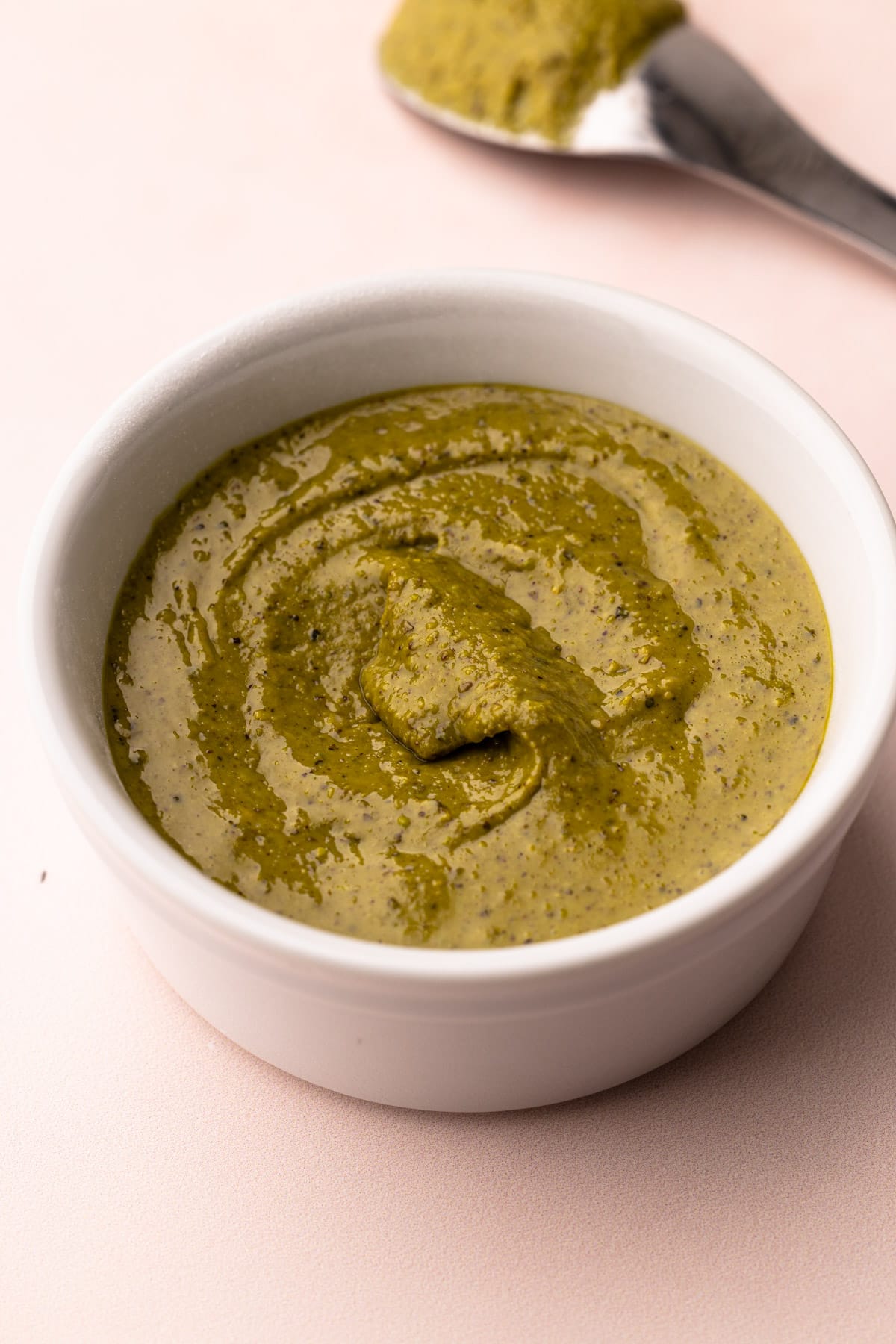
Want to save this recipe?
Enter your email & I'll send it to your inbox. Plus, get weekly updates from me!
Pistachio butter is a creamy spread made from ground pistachios that are ground up until their natural oil is released. We all love the more commonly known nut butters such as peanut butter (hello Peanut Butter Pie) and almond butter, but what sets pistachio butter apart is its buttery, slightly sweet flavor and bright vibrant green color. It's much harder to find in the supermarket, but is commonly available in Italian specialty stores.
A huge drawback of this unique nut butter, though, is the cost. While raw pistachios can be pricey, real pistachio butter and pistachio paste can be even pricier. So it is definitely more economical to make it at home. And often times it will already contain sugar (which isn't ideal if you want to use it as an added ingredient to a recipe, like with this Pistachio Cream Pie or Pistachio Pudding). But the saving grace here is that it's super easy to make at home! And this Pistachio Butter Tutorial is going to show you how!
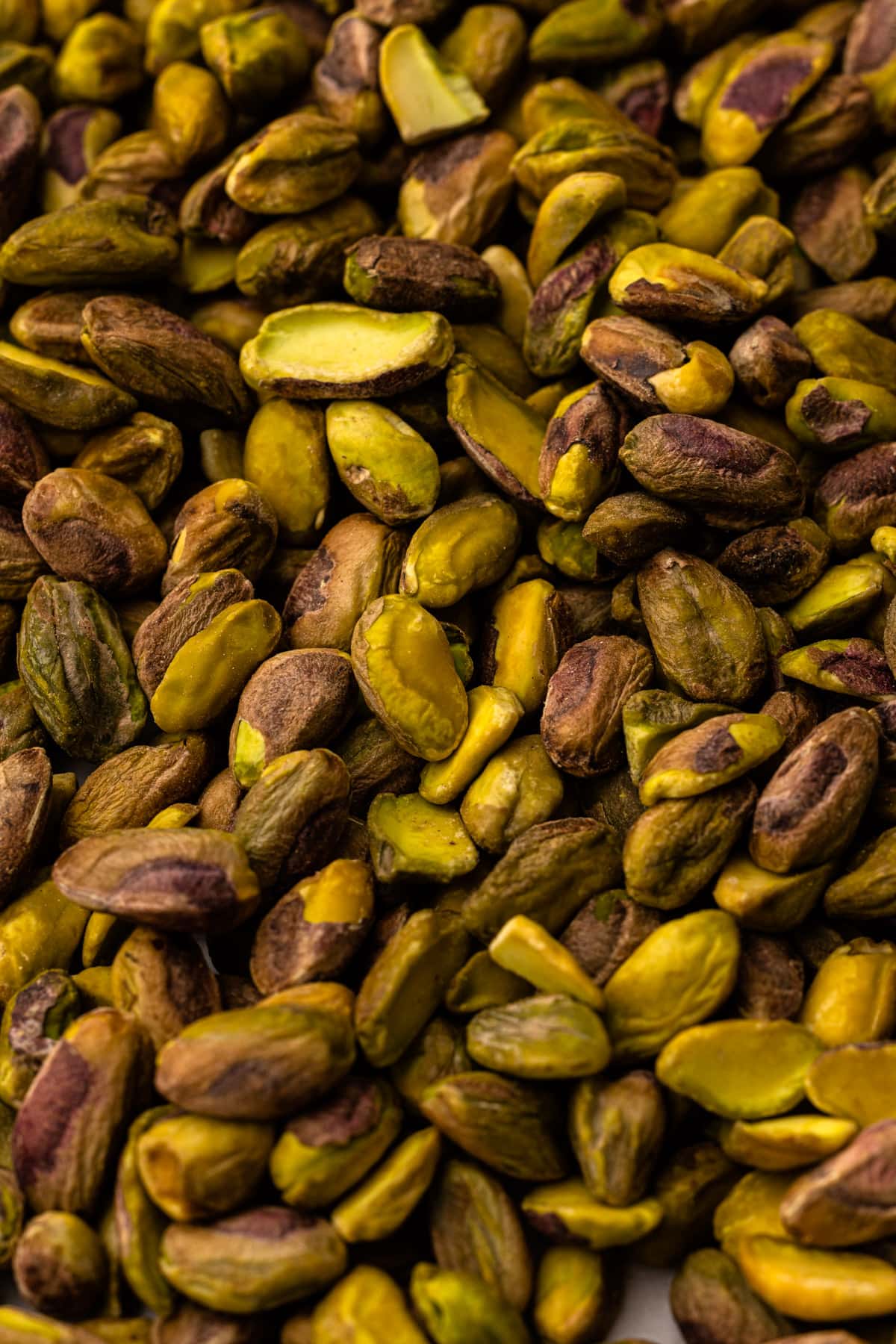
Ingredients Needed
- raw unsalted pistachios
- salt
- neutral oil or pistachio oil (this is only needed if the pistachios are too dry and are not easily coming together in the food processor)
Kitchen Notes from Recipe Testing
Making nut butter is simple: grind up nuts until they turn into a buttery spread. However, I wanted to make sure to get the best version of this pistachio butter—one that had a pure pistachio flavor enhanced only by salt and a bright, vibrant green color. I tested a couple of different approaches to making it.
I experimented with both store-bought roasted pistachios and raw pistachios and ultimately found that raw pistachios work best for making pistachio butter. However, I recommend warming them up before processing. To do this, spread the raw pistachios in a single layer on a baking sheet and place them in a cold oven. Turn on the oven and bake the pistachios for about 10 minutes until they are hot and just beginning to release their fragrance. The goal isn't to roast them, but if you prefer a slightly roasted flavor, you can leave them in the oven for a bit longer. This step helps release the natural oils in the pistachios, making them easier to turn into pistachio butter in the food processor.
I even tried blanching the pistachios and then taking the brown/purple skin off of them to produce a "clean" colored pistachio butter. In the end, I found that a waste of time, as raw pistachios, even with their skin, still produced a beautiful-colored pudding. And to be clear, I mean the skin, not the shell.
I also tested making it in both a food processor and a blender. For sure, a food processor is the most ideal method of making it, as even with a high-speed blender, it required more hands-on stopping and starting and pushing down the paste before it would turn into butter. However, either a blender or a food processor can work here.
Step-By-Step Visual Overview
It's a relatively straightforward process to turn the pistachios into a paste. Here are the steps in making it:
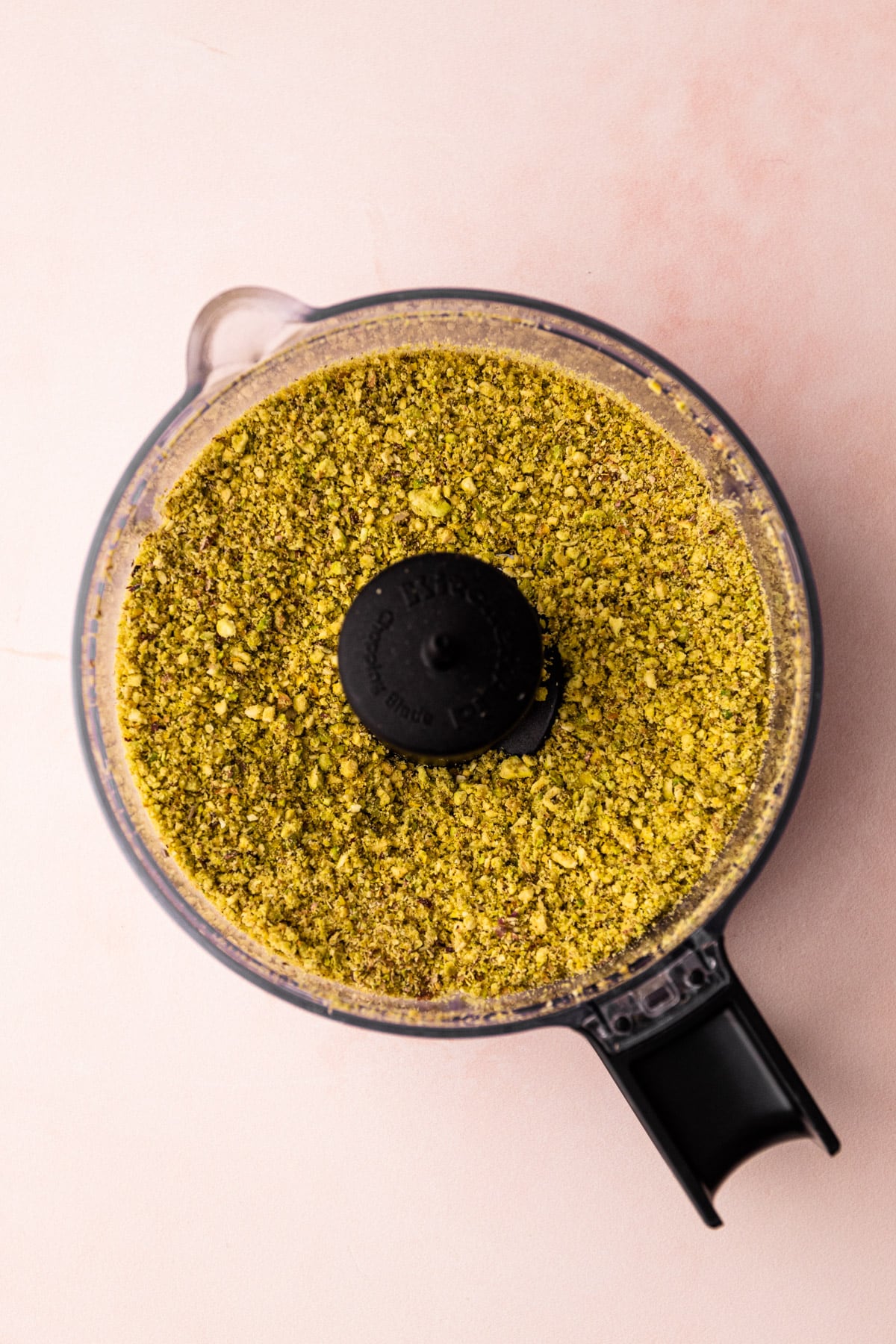
Step 1: Process the pistachios to a fine powder. This should happen fairly quickly. At this point, scrape down the sides. If your machine is very hot, let it rest for 30 seconds.
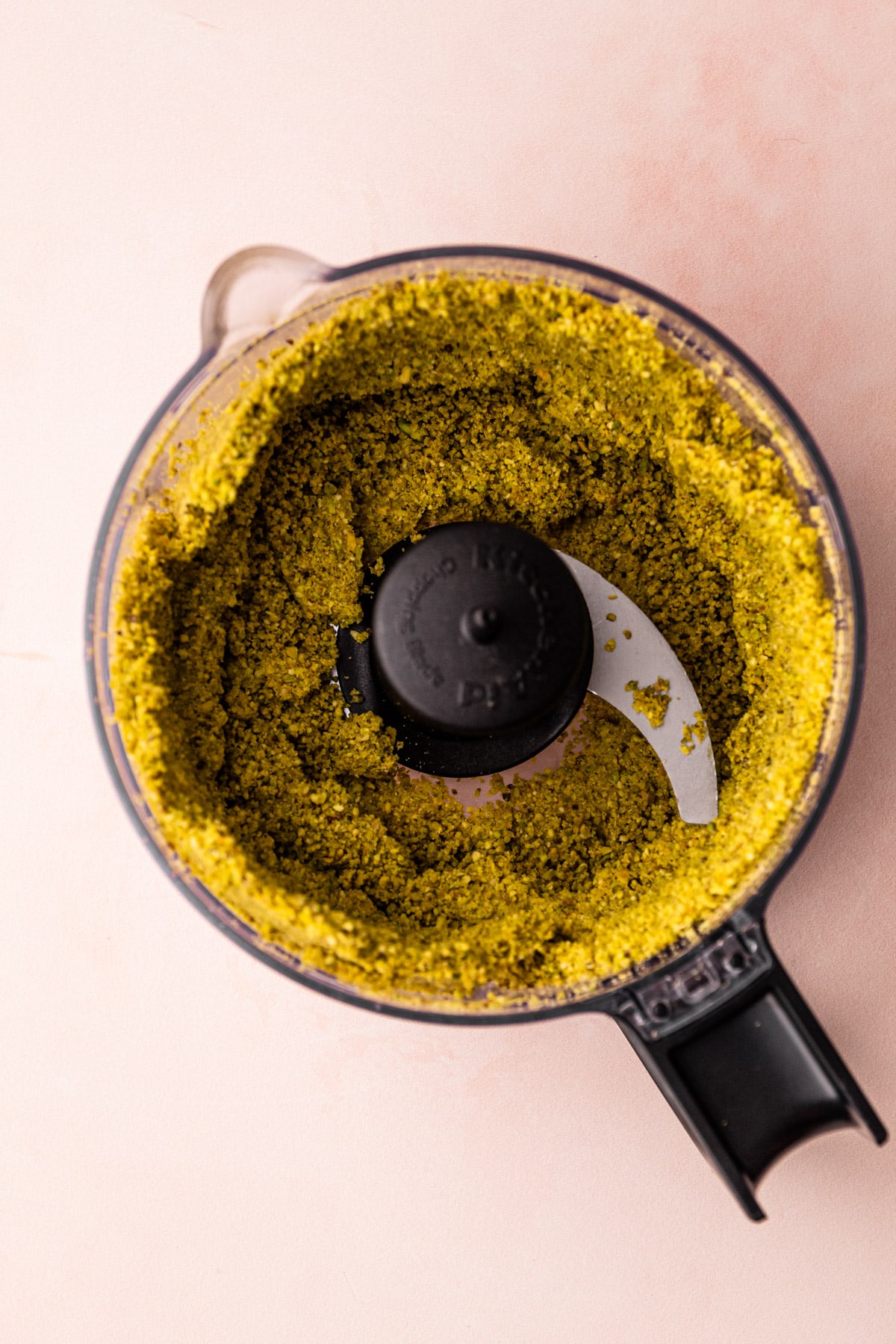
Step 2: Continue processing until the pistachios start to clump together. Scrape down the sides and continue to process.
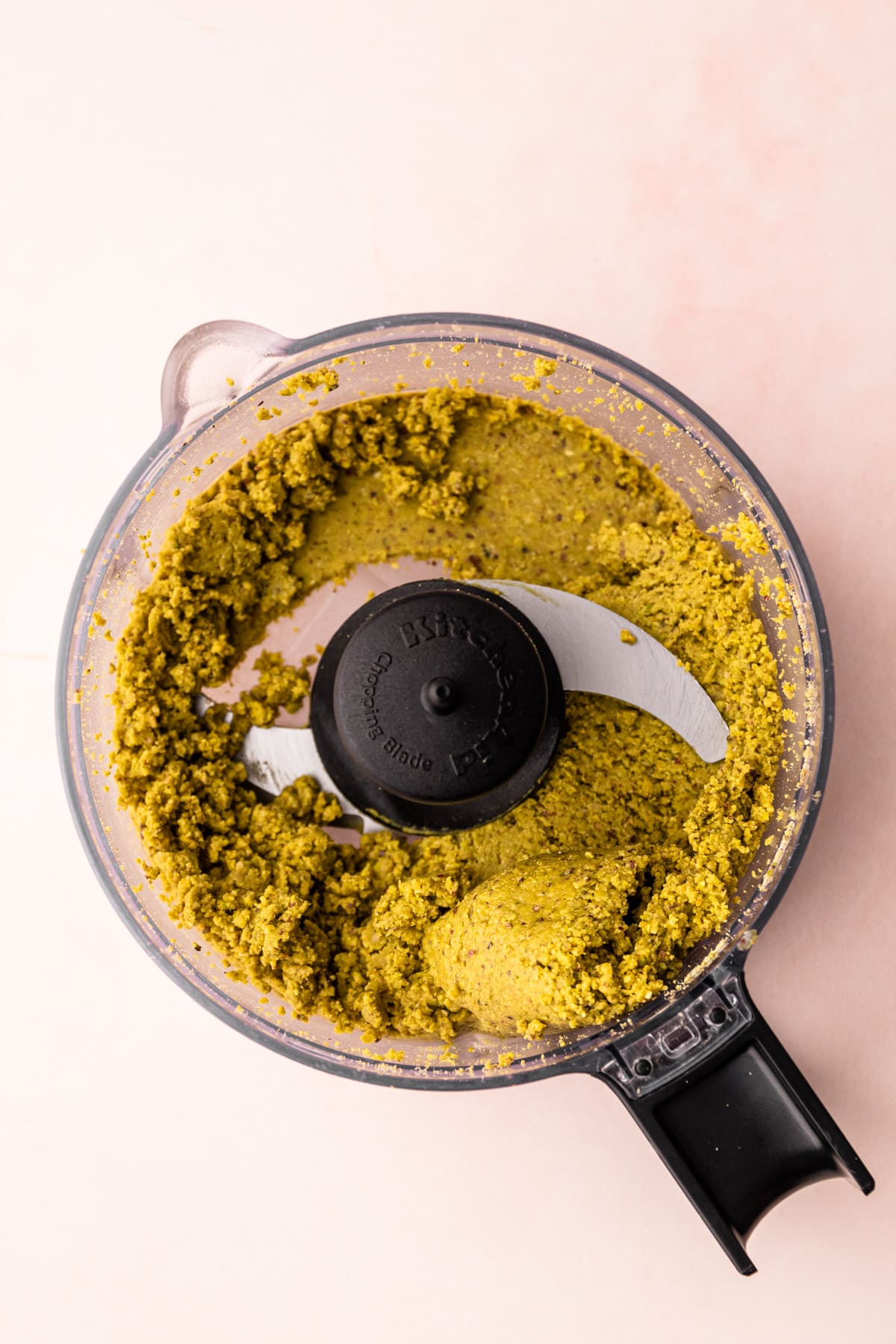
Step 3: The pistachios may clump around the blade at some point but keep going. At this stage, you might add a splash of neutral oil (or pistachio oil) to help the nuts emulsify.
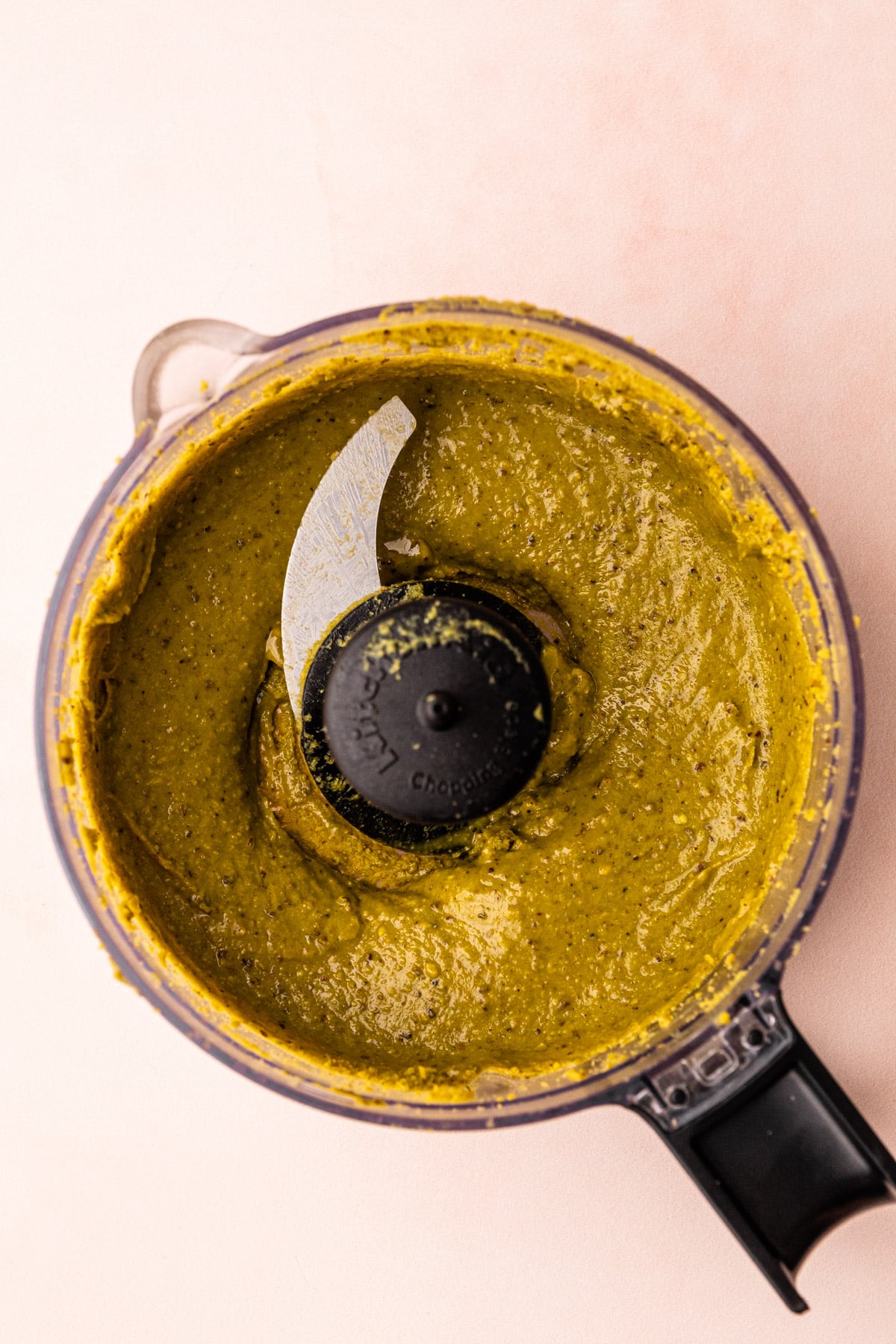
Step 4: Continue to process until the pistachios release their oil and turn into a smooth, thick paste!
Troubleshooting Pistachio Butter
Making a nut butter should be simple enough: grind raw nuts until they release their oil and become a smooth creamy paste. Yet like most simple things in life, there can be some pitfalls when it comes to making it:
- The biggest hurdle when making nut butter is the concern while making it that it will never come together. Depending on the strength of your machine, it can take around 10 minutes or even longer. Keep going; it will eventually turn into butter.
- However, if you add any additional ingredients like water or sugar, it can cause the mixture to "seize" up. So, avoid adding anything to the pistachios to help smooth them out.
- ...Except oil! If your pistachios have been processing for more than 8 minutes and are still clumped in a ball, add a touch of neutral oil (or pistachio oil for added flavor) to help it along. About 1-2 teaspoons should do the trick.
- Be mindful about how hot the machine is getting! If it overheats, it can burn on the motor. And, it can actually cook the pistachios which isn't ideal for the flavor. When in doubt, give the machine time to cool down.
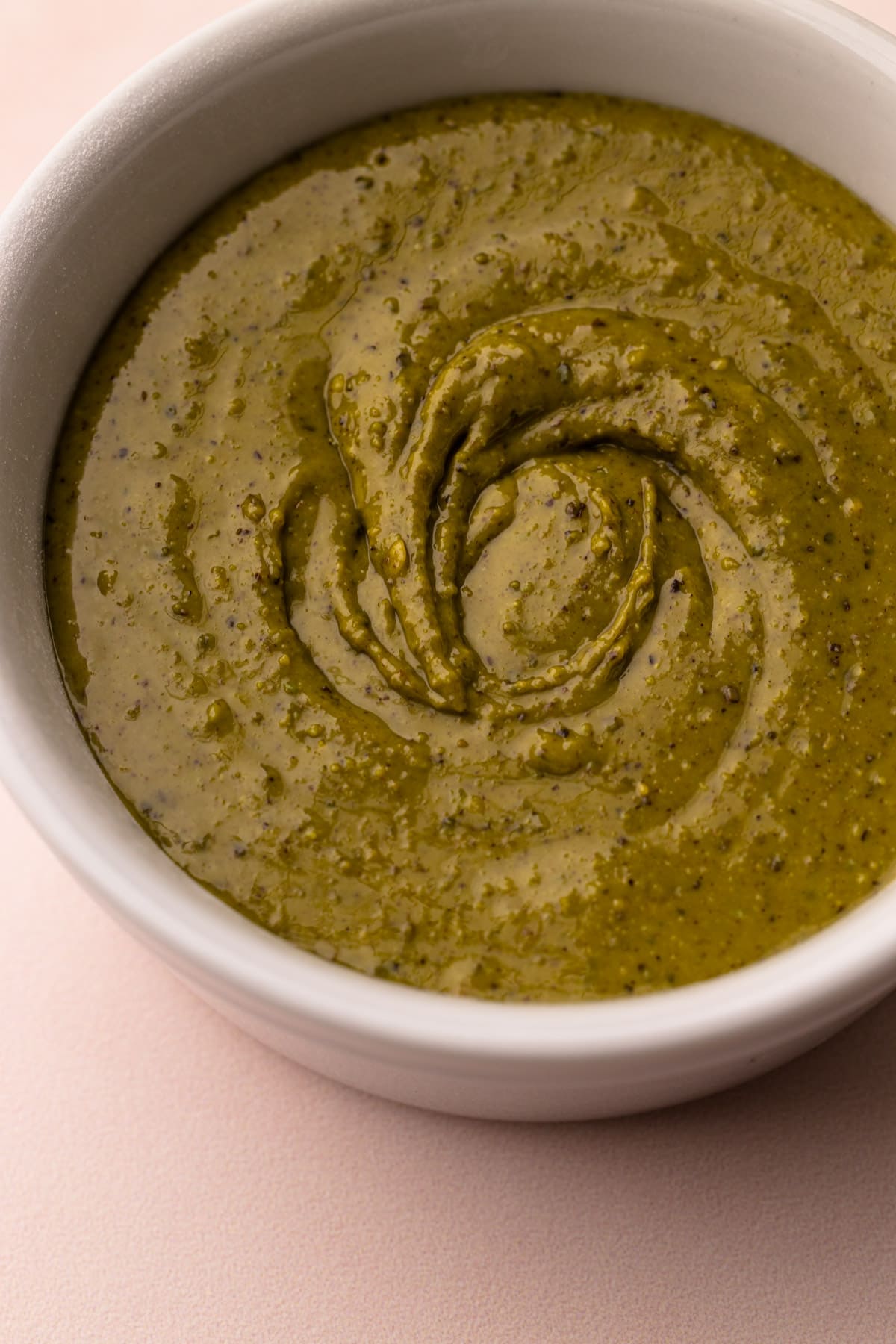
Adding Sugar
Don't add any sugar until after the pistachio butter has been made. If you add sugar to the pistachios at the beginning of the blending process, it can interfere with the nuts' ability to release their natural oils. Sugar absorbs moisture, so it may prevent the pistachios from grinding properly, resulting in a grainy or gritty texture.
If you want to add sugar to the pistachio butter, it's best to do so after the pistachios have been processed into a smooth butter. Once the pistachio butter reaches your desired consistency, you can stir in sugar, honey, or maple syrup. Just be careful not to overprocess it, because it can cause it to seize up.
Storing It
Nuts can go rancid quickly, so make sure to store the pistachio butter in the refrigerator in an airtight container. It will stay fresh for several weeks in the refrigerator. Before each use, give the butter a stir to redistribute any natural oils that may have separated. If you prefer a softer consistency, you can leave the pistachio butter at room temperature for a short period before serving.
More Pistachio Recipes
- Pistachio Cream Pie
- From-Scratch Pistachio Pudding
- Pistachio Shortbread Cookies
- Pistachio and Mascarpone Pie
I am so honored when you make a recipe from my site! If you make this Homemade Pistachio Butter recipe, please leave a star ⭐️⭐️⭐️⭐️⭐️ rating with your experience!
Full Recipe
How to Make Pistachio Butter
Creamy, nutty, and delightful, Pistachio Butter is a unique spread that can be enjoyed on its own or used to add flavor to various recipes. Learn how to make Pistachio Butter at home for the freshest and most cost-effective option.
- Prep Time: 00:15
- Cook Time: 00:10
- Total Time: 25 minutes
- Yield: 1-½ cups
- Category: Tutorials
Ingredients
- 2 cups (240 grams) raw unsalted pistachios
- Pinch coarse kosher salt
- 1 tablespoon pistachio oil or neutral oil (optional)
Instructions
- On a rimmed baking sheet, spread the pistachios in an even layer.
- Turn on the oven to 350ºF and immediately bake the pistachios for about 10 minutes, or until the pistachios are warmed through and barely fragrant (see note).
- Add pistachios and salt to a food processor or high-speed blender.
- Process the pistachios to a fine powder. This should happen fairly quickly. Continue to process until the pistachios form a clump around the blade. Scrape down the machine.
- Process until the pistachios release their oil and are thick and creamy, scraping down the sides frequently, for 5 to 10 minutes. If your machine is getting too hot, pause this process and let it cool down before continuing.
- If desired, add sweetener (about 1 tablespoon of granulated sugar, maple syrup or honey) after the pistachio butter has come together.
Notes
Adding oil isn't strictly necessary. Adding oil is only needed if the pistachios are too dry and are not easily coming together in the food processor. Do not add at least the stage where the pistachio has turned into a paste and is clinging to the blade.
Warming up the nuts in the oven helps release the natural oils in the pistachios, making them easier to turn into pistachio butter in the food processor. This is technically an optional step.
Monitor the machine's temperature. If it overheats, it can damage the motor and affect the flavor of the pistachios. When in doubt, let the machine cool down.
Some of the links on this page may be affiliate links. Everyday Pie is a participant in the Amazon Associates Program. As an Amazon Associate I earn from qualifying purchases, at no extra cost to you.


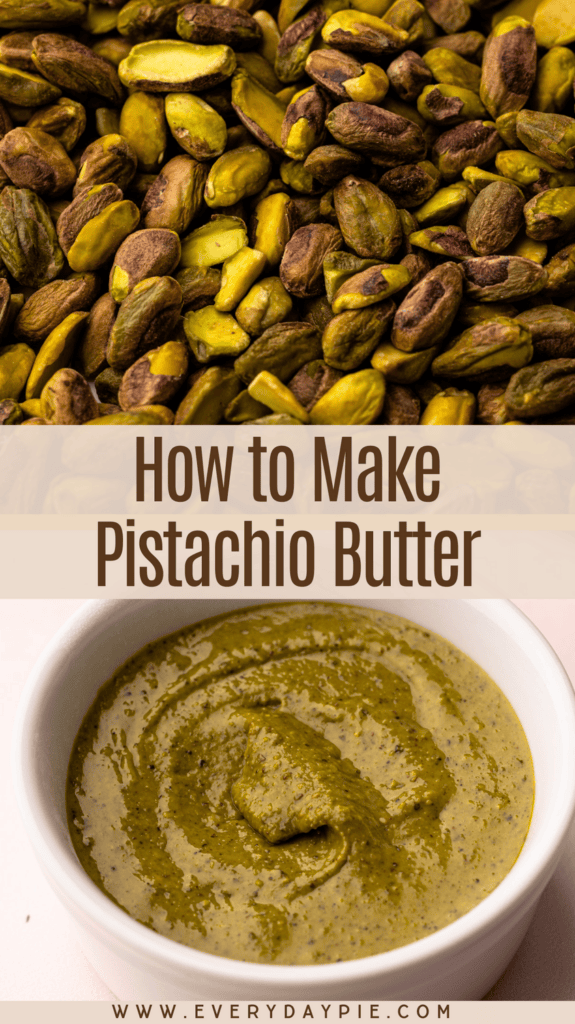
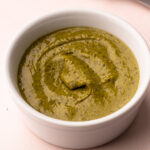


Leave a Reply